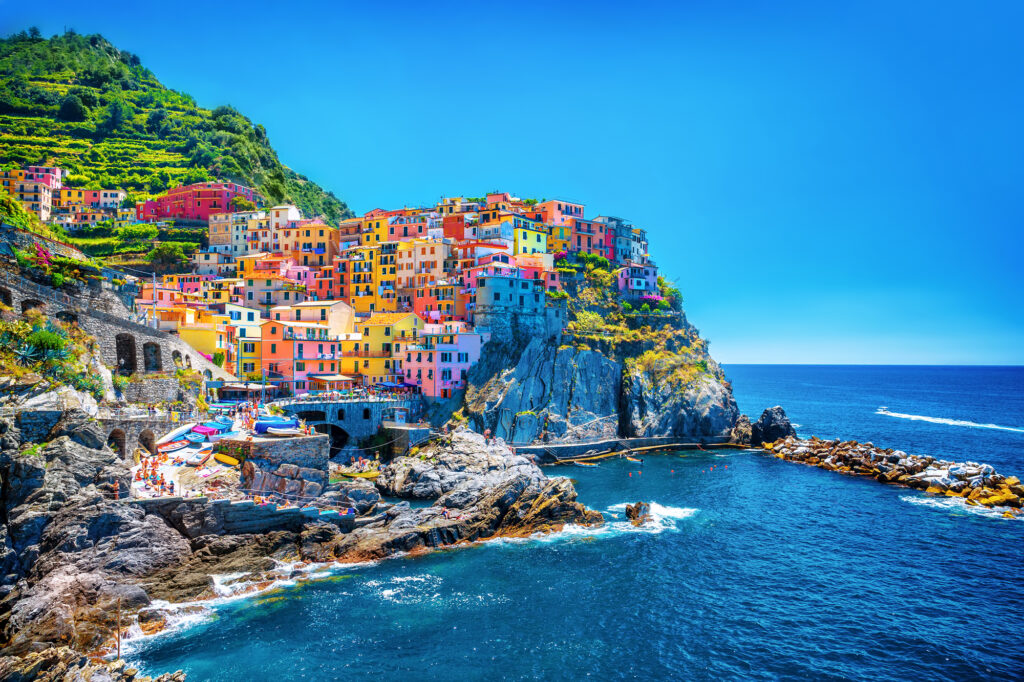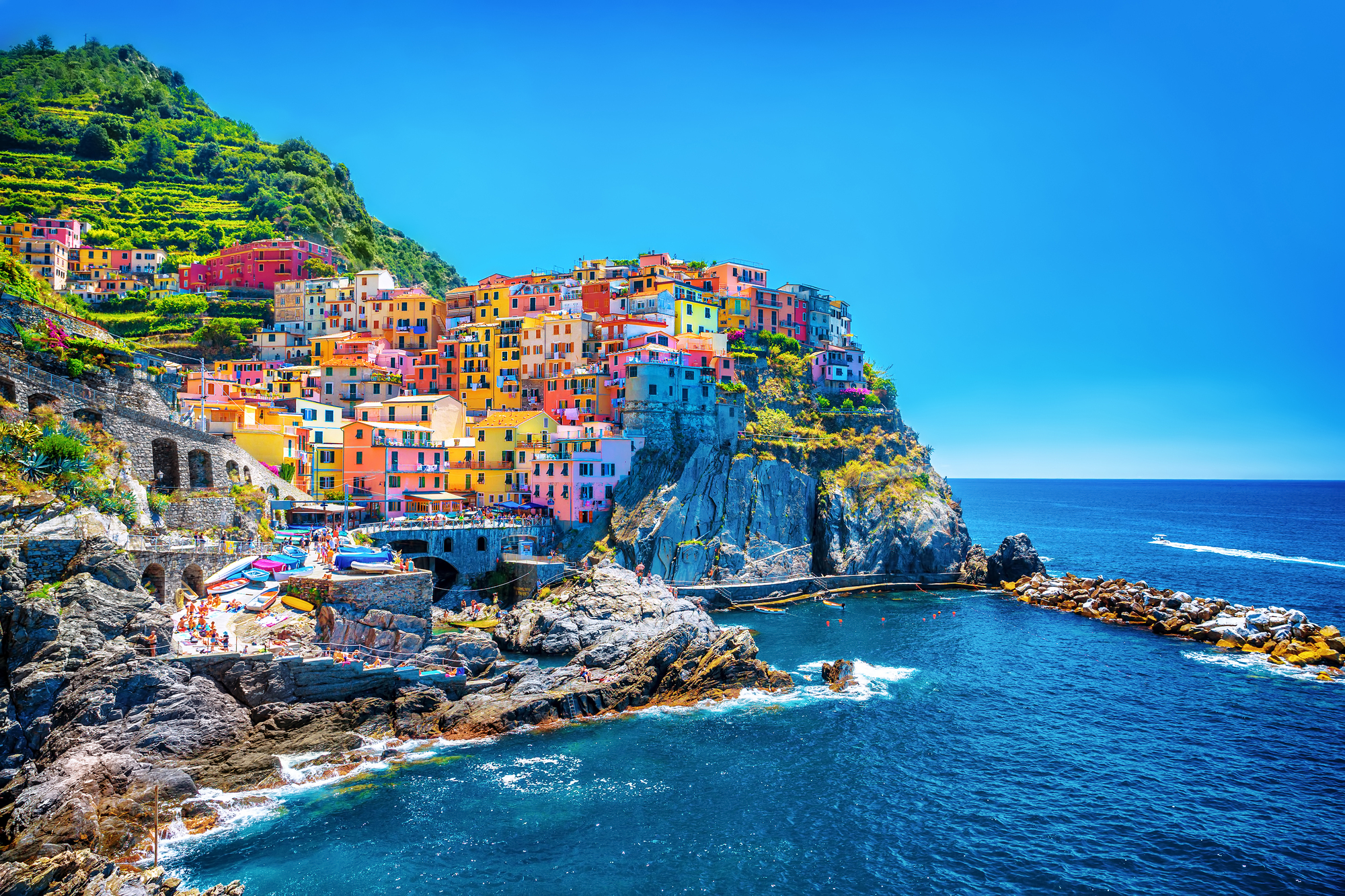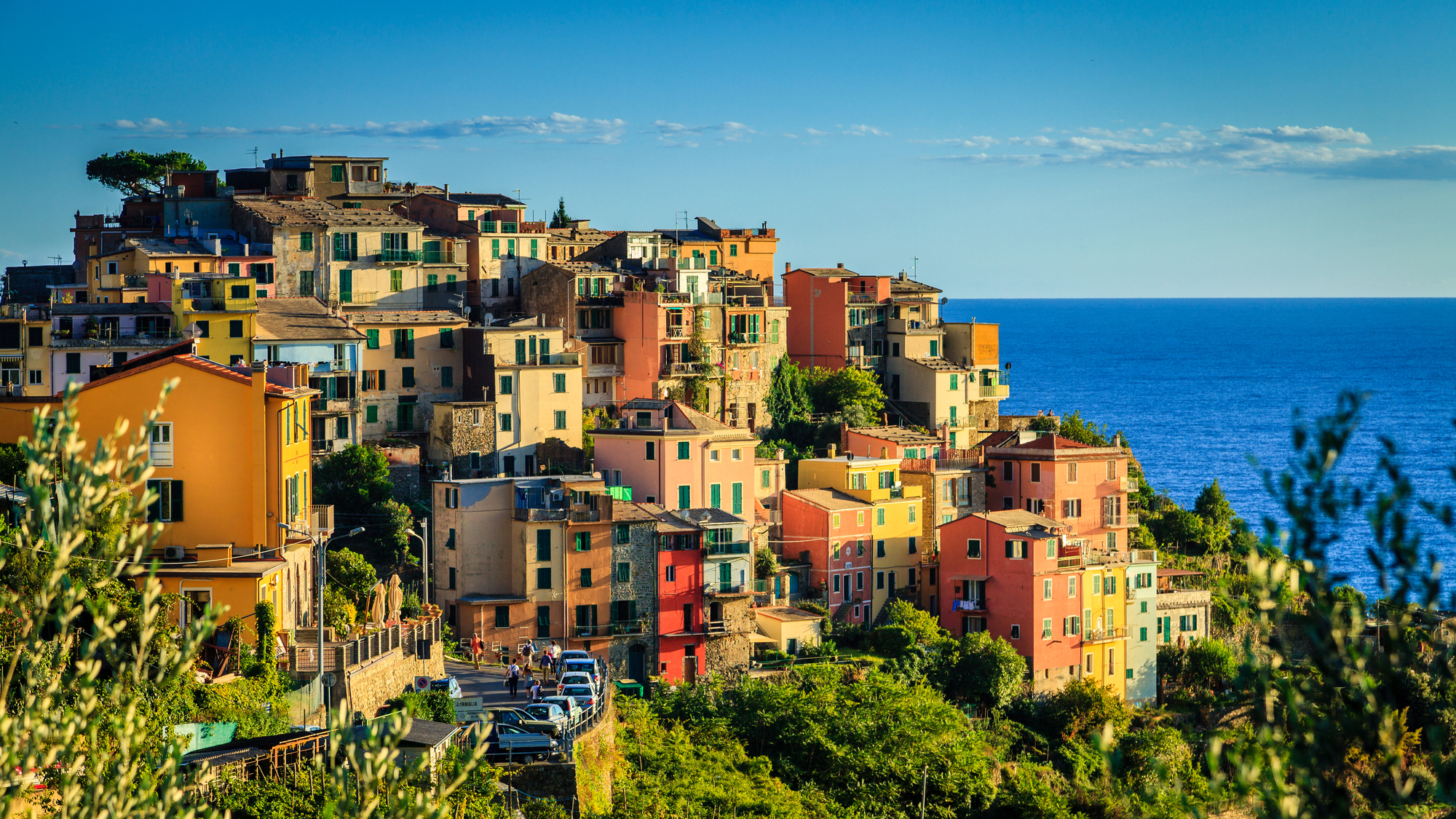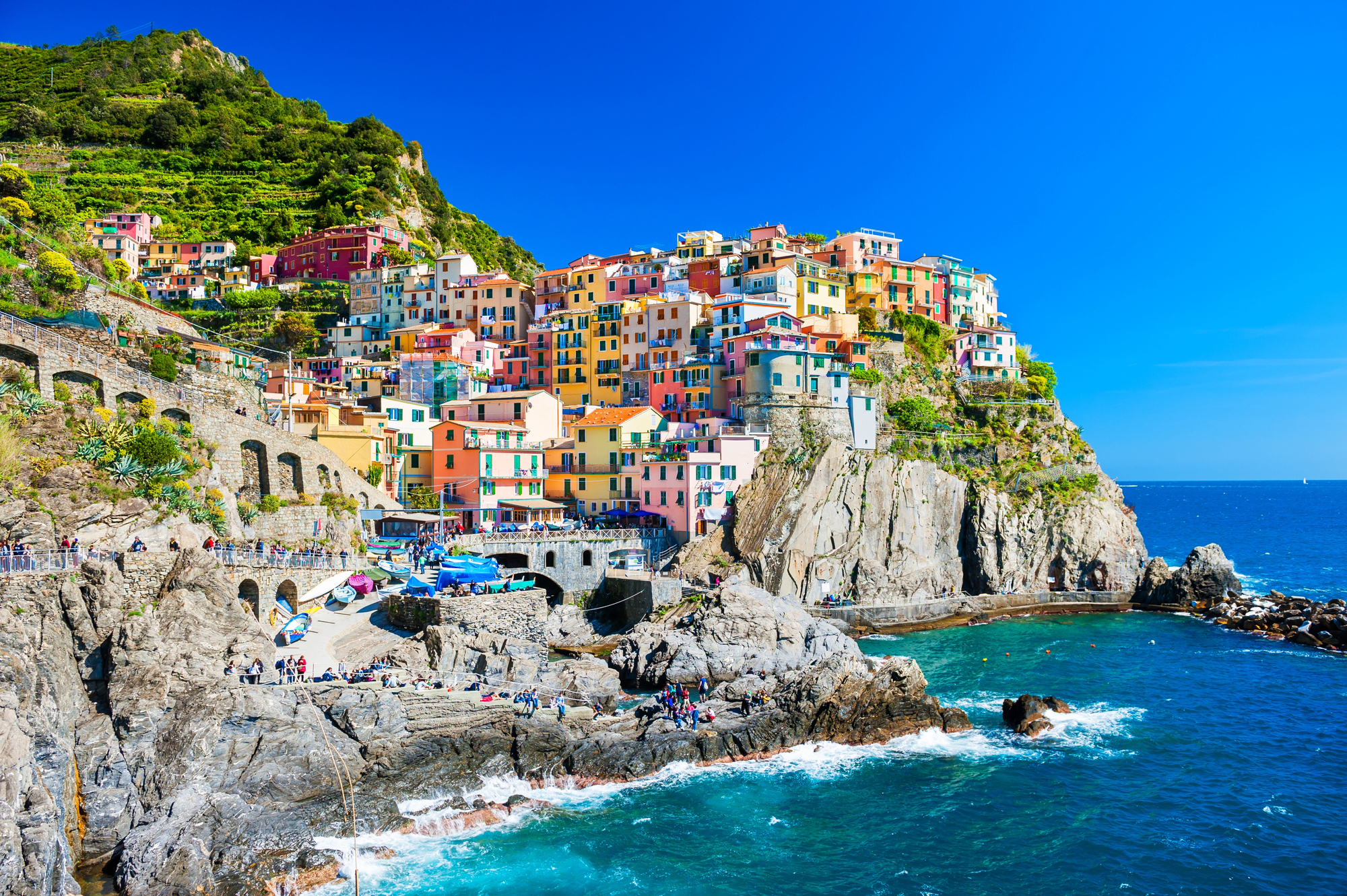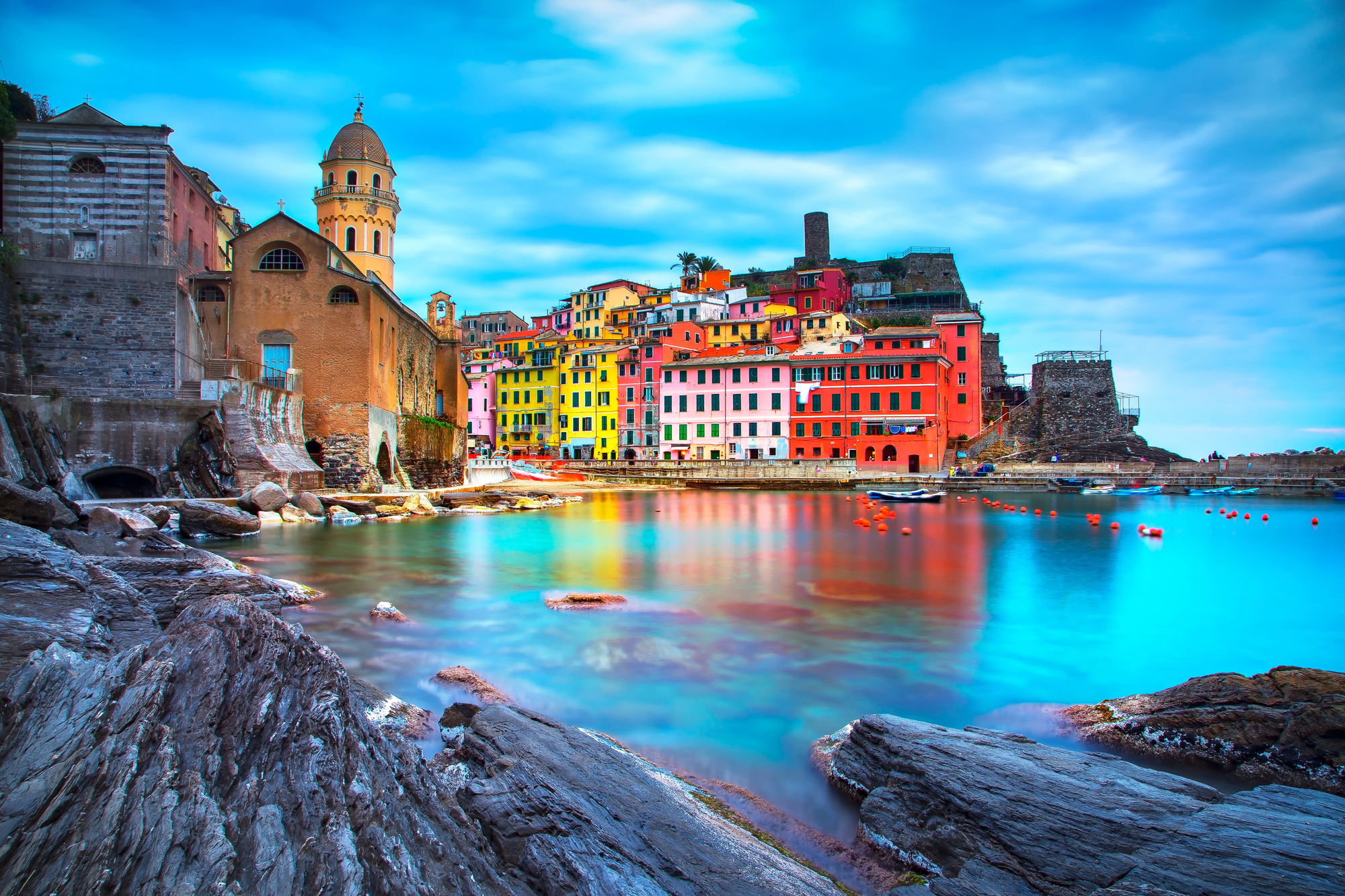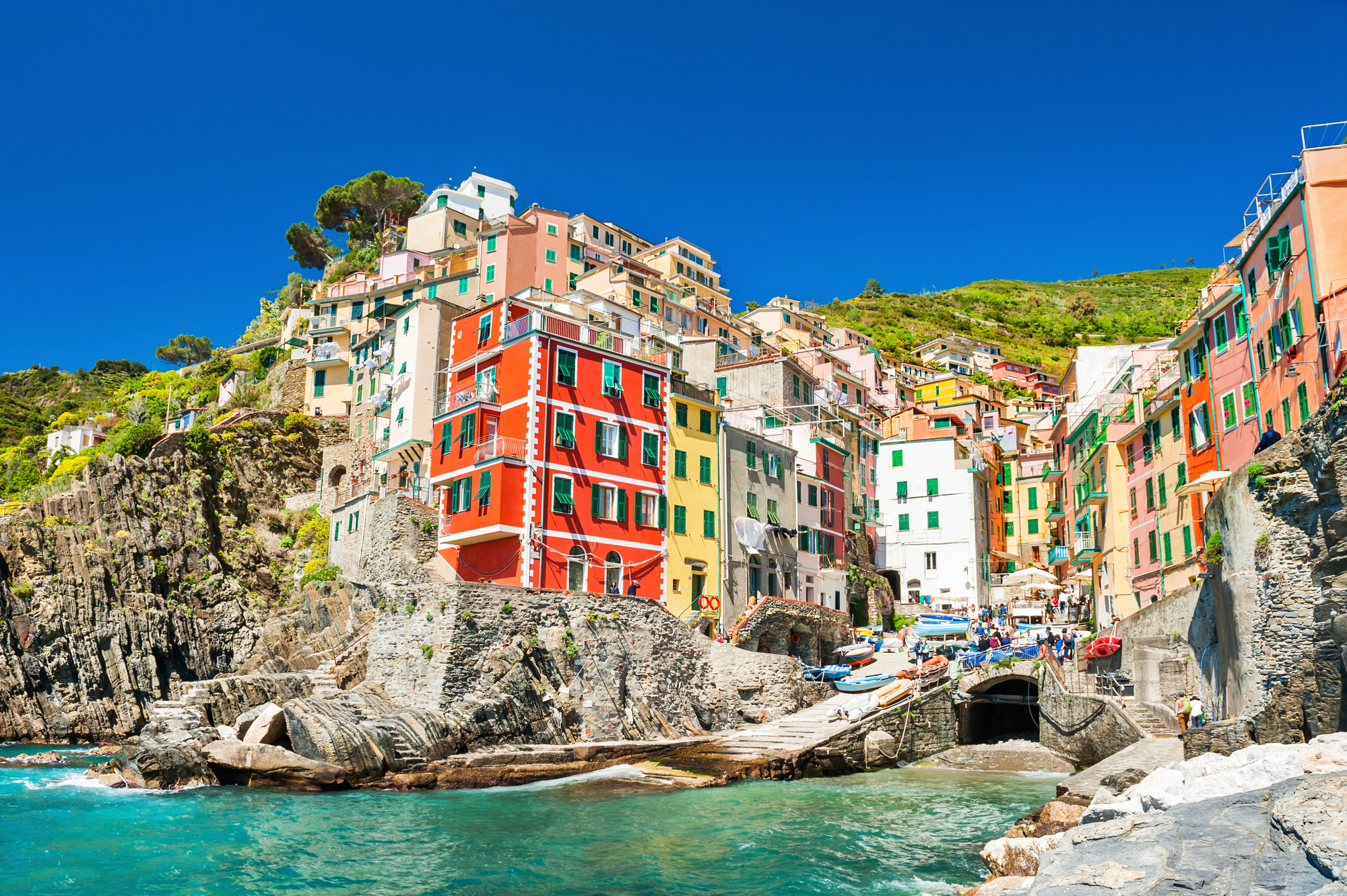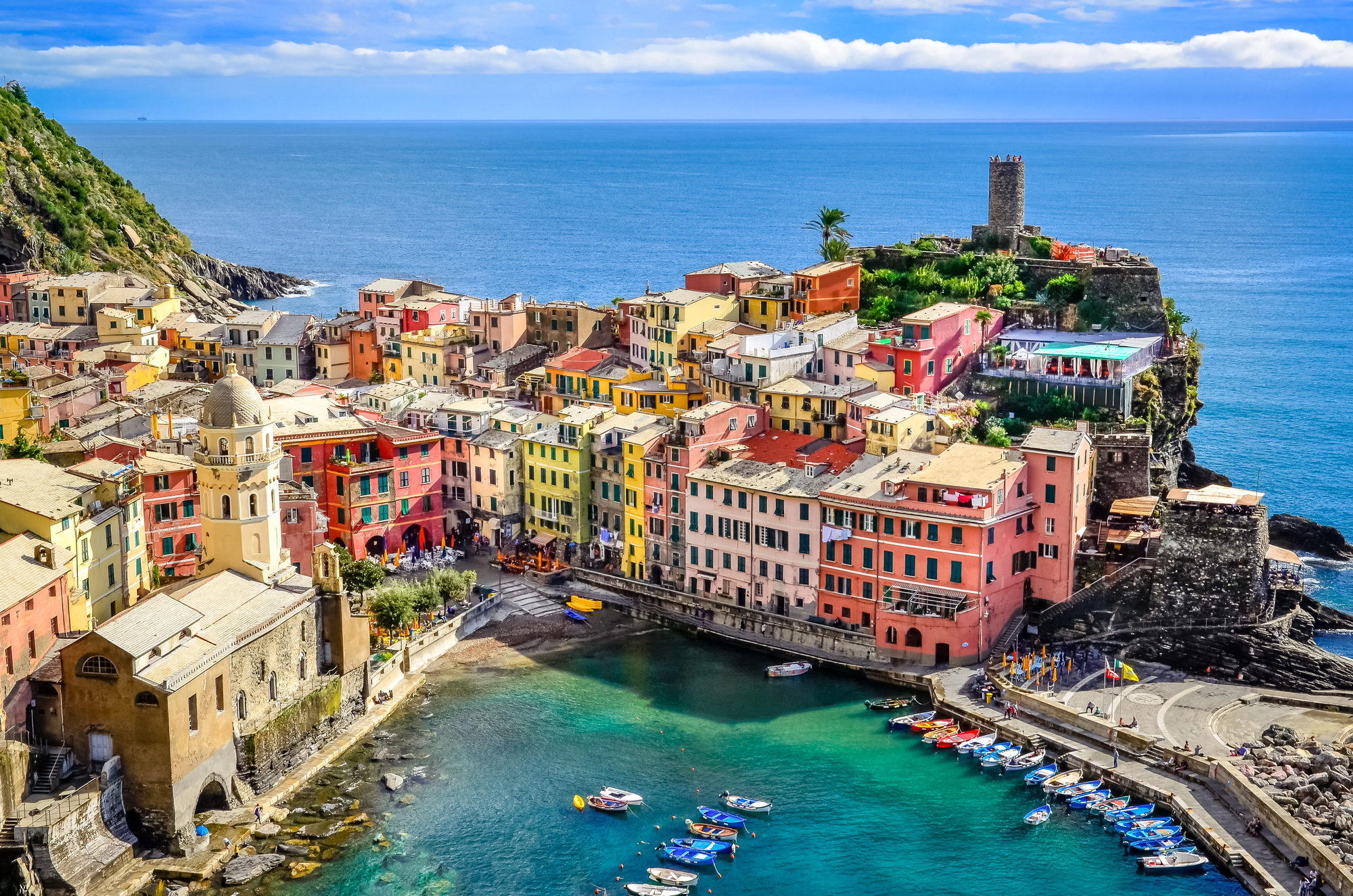Nestled along the craggy Italian Riviera, Cinque Terre lures travelers with five vibrant fishing villages that almost seem to tumble down the cliffs. Monterosso, Vernazza, Corniglia, Manarola, and Riomaggiore each bring their own magic—think jaw-dropping sea views, winding trails, and that irresistible Italian vibe. If you’re planning a trip, it’s smart to get familiar with the train system, hiking routes, and the ebb and flow of crowds, so you can make the most of these charming villages.
Honestly, spring (April-May) or early fall (September-October) are the sweet spots—nice weather, fewer people. Bring comfy shoes; cars aren’t allowed in most village centers, so you’ll be walking. A handy train zips between the villages, and the hiking trails are as scenic as they come, letting you hop from one village to the next even if you’re short on time.
Get a discount of 15% to 70% on accommodation in Cinque Terre! Look for deals here:
Cinque Terre Hotels, Apartments, B&Bs
Each spot has its own flavor—Monterosso’s got that beachy energy, while Manarola is wrapped in vineyards. Want to swim in blue water, hike iconic coastal paths, or just eat seafood with a killer view? Cinque Terre delivers those timeless Italian moments that feel almost untouched.
Overview of Cinque Terre
Cinque Terre sits on the Ligurian coast in Italy, made up of five colorful fishing villages clinging to dramatic cliffs. It’s a place where natural beauty, old-world history, and genuine Italian traditions still shape daily life.
Location and Geography
The area stretches about six miles along the Italian Riviera between Genoa and Pisa. Monterosso al Mare, Vernazza, Corniglia, Manarola, and Riomaggiore perch on steep, terraced hillsides with sweeping views over the Mediterranean.
Every village has its own distinct character. You get these wild cliffside houses painted in every color you can imagine. Tiny lanes and hiking paths connect the villages, giving you constant glimpses of turquoise sea below.
Steep vineyards and olive groves rise right from the water. Locals built terraces, held up by endless dry stone walls, to make the land workable—a crazy amount of effort, but it’s created a landscape that kind of blends with nature in its own quirky way.
History and Cultural Significance
The Cinque Terre villages go way back—think medieval times, with the first records from the 11th century. People started out here fishing and coaxing crops from those tough terraces.
Until the late 1800s, the villages stayed pretty isolated, only getting connected by train after centuries of going it alone. That isolation probably explains why so much of their character and old-school ways have stuck around.
Fishing, wine, and olive oil—those have always been the backbone of local life. The area’s famous for Sciacchetrà, a sweet dessert wine from grapes grown on the steep terraces.
Architecture here means tall, skinny, colorful houses packed close together—a clever answer to tight spaces and, back in the day, pirate threats.
UNESCO World Heritage Site
UNESCO recognized Cinque Terre in 1997 for its cultural and natural value. That status helps shield both the villages and the wild landscape around them, showing off how people have shaped a difficult environment without ruining it.
Italy made it a national park in 1999, protecting not just the five villages but also the hills and coastline. These efforts focus on keeping up the old terraced farms, which hold the land together and prevent landslides. Those terraces are a real testament to stubborn human effort and creativity.
Tourism now drives much of the local economy. It’s a mixed bag—brings in money, sure, but also strains the fragile environment. Sometimes the number of visitors gets capped to keep the place from losing what makes it special.
Cinque Terre Villages
Each of the five villages in Cinque Terre serves up a different experience, but all share that jaw-dropping coastal backdrop. These colorful communities cling to the cliffs, each with its own quirks.
Riomaggiore
Riomaggiore greets you first if you’re coming from La Spezia. The village is all tall, narrow houses in those classic Ligurian shades—yellows, reds, pinks.
Via Colombo, the main drag, winds through a ravine down to a tiny harbor where fishing boats rest on the rocks. If you’re up for a short climb, check out the 13th-century Castle of Riomaggiore for amazing coastal views.
For that perfect photo, wander to the harbor at sunset when the whole village glows. Grab some seafood at local spots like Dau Cila—seafood pasta here is next-level.
The Via dell’Amore (Lovers’ Path) starts here, but it’s often closed for repairs. It’s worth checking current updates if you’re hoping to walk it.
Manarola
Manarola might just be the most photogenic of the bunch. The village spills down a high rock, 70 meters above the sea, with houses in every color imaginable.
Right in the center, you’ll find the Church of San Lorenzo from 1338, with its striking rose window and gothic touches. Down by the harbor, there are rocky swimming spots—perfect after a hot hike.
Vineyards wrap around the village, producing the well-loved Sciacchetrà wine. If you climb up to Punta Bonfiglio, you’ll get killer panoramic views of Manarola and the sea.
Manarola tends to quiet down in the evenings once the day-trippers leave, making it a great place for a peaceful dinner as the sunset lights up the buildings.
Corniglia
Corniglia stands out because it’s perched about 100 meters above the sea, not right on the water like the others. After getting off at the train station, you’ll either climb the Lardarina—yep, 382 steps—or catch the shuttle up to the village.
It’s the quietest of the five, and you get sweeping views of the coastline as a reward. The village itself is basically one main street, Via Fieschi, lined with cozy cafes and little shops.
Stop by the Church of San Pietro, built in 1334, and hang out in the tiny Piazza Taragio. For the best views, walk to the terrace at the end of the village facing Manarola.
The buildings here are painted in softer, earthy tones that blend with the vineyards. Corniglia’s farming roots show in the local honey and herbs you’ll find for sale.
Other Picturesque Villages
Sure, Manarola and Riomaggiore get a lot of attention, but Vernazza and Monterosso al Mare each bring their own twist to Cinque Terre.
Vernazza
Vernazza often steals the spotlight as the jewel of Cinque Terre. Its natural harbor is ringed by colorful houses, making for a postcard scene. The little piazza opens right onto the sea, perfect for chilling out and watching the boats.
Climb up to the ruins of Doria Castle for panoramic views—it’s easy to see why people call this the prettiest village. The medieval tower is a reminder of Vernazza’s storied past.
Despite the tourists, Vernazza still feels like a real fishing village. Narrow streets twist between pastel houses, and you can always find a quiet corner away from the crowds.
Thinking about where to stay? Vernazza strikes a nice balance: enough restaurants and shops, but not so busy that it loses its charm.
Monterosso al Mare
Monterosso al Mare is the biggest of the five and feels the most like a resort town. It’s split into two parts—the old town and the newer Fegina area—connected by a tunnel.
Unlike its neighbors, Monterosso has wide, sandy beaches lined with striped umbrellas and beach clubs. If you want to mix hiking with some real beach time, this is your spot. Sandy stretches are rare along this rocky coast.
The old town has broader streets and more places to shop. Lemons grow everywhere, and you’ll see limoncino—a local treat—on every shelf.
If you want more comfort or have mobility concerns, Monterosso is the easiest to navigate and has the biggest range of hotels and amenities. It’s much flatter than the other villages, which is a relief if you’re tired of stairs.
Planning Your Trip
A little planning goes a long way in Cinque Terre. The right timing and itinerary can help you dodge the crowds and soak up the best of these coastal gems.
Best Time to Visit
April to May and September to October are the golden months. You’ll get mild temps (65-75°F), fewer tourists, and nearly everything’s open.
June through August? Hot, crowded, and pricey. Trains and beaches fill up, and hotel rates hit their peak.
From November to March, things slow down a lot. Some spots close, and hiking depends on the weather, but you’ll see the villages at their most authentic—and snag the lowest prices.
Weather rundown:
- Spring: Some rain, but wildflowers everywhere
- Fall: Clear skies, warm seas
- Summer: Hot—great for swimming, less so for hiking
- Winter: Mild, but rain and closures are common
How Long to Stay
Two or three nights works well for most folks. That’s enough time to see all five villages, hike a trail or two, and linger over meals without rushing.
You can try a day trip, but you’ll barely scratch the surface—maybe two or three villages at most, and you’ll miss the magic of quiet mornings and evenings.
If you’re a hiking fanatic or want to really dig into the culture, four or five days lets you explore more deeply. You’ll have time for longer hikes, side trips to places like Portovenere, and flexibility if weather messes with your plans.
Where you stay matters. Sleeping in one of the villages immerses you in the local vibe. Monterosso and Vernazza have the most options for lodging.
Cinque Terre Itinerary
Day 1:
- Morning: Arrive and get settled at your accommodation
- Afternoon: Take your time wandering around your base village—poke into shops, grab a gelato, just soak it in
- Evening: Find a spot for a sunset dinner at a local restaurant (the views are half the experience)
Day 2:
- Morning: Hike between two villages—Monterosso to Vernazza is a classic, but any stretch works
- Afternoon: Explore the second village, maybe swim if the weather’s good and you remembered your suit
- Evening: Hop on the train to a third village and try a different restaurant for dinner
Day 3:
- Morning: Check out the remaining villages by train, no need to rush
- Afternoon: If it’s the right season (April-October), take a boat tour for those coastal views
- Evening: Head back to your favorite spot for a last dinner—sometimes you just want to revisit the best
The Cinque Terre Card is honestly worth it. It covers train rides between villages and gets you onto the hiking trails. The basic hiking card is about €7.50 a day, or pay €16 for the version that includes unlimited train rides.
Packing smart is huge here. Good walking shoes are a must, and you’ll want a water bottle and swimsuit. The villages are full of stairs—seriously, leave the rolling suitcase behind and just bring a backpack if you can.
How to Get to Cinque Terre
Getting here’s pretty easy, especially by train. Most people arrive from cities like La Spezia, Genoa, or Pisa, then catch a local train to the five villages.
By Train
Trains are the way to go—simple and reliable. From Rome, Florence, or Milan, you’ll take a train to La Spezia Centrale. It’s about 3 hours from Milan or Florence, a bit longer from Rome.
Once you’re in La Spezia, hop on the Cinque Terre Express. It runs every 15-20 minutes all day, stopping at each village: Riomaggiore, Manarola, Corniglia, Vernazza, and Monterosso al Mare.
If you fly into Pisa or Genoa, just grab a train to La Spezia, then switch to the local line. It’s all pretty straightforward.
If hiking is on your list, pick up a Cinque Terre Card—it covers unlimited train rides and gives you access to the trails.
By Car
You can drive to Cinque Terre, but honestly, it’s not the best idea. The roads are narrow and twisty, and parking is a headache.
If you really need to drive, park in La Spezia or Levanto and take the train in. Both towns have paid parking lots near the stations.
Some villages—like Riomaggiore and Monterosso—have tiny parking areas, but they fill up fast, especially during peak months (April-October). Expect to pay €20-25 a day for parking.
Most village centers don’t allow cars. The streets are steep, narrow, and often just stairs. It’s a pedestrian place, which is part of the charm.
For a day trip, just park in La Spezia and let the train do the work. It saves you a lot of hassle.
Where to Stay in Cinque Terre
Picking where to stay depends on your vibe. Each village has its own personality, from lively beach towns to quiet hillside escapes.
Best Hotels in Cinque Terre
Vernazza gets a lot of love—it’s central, you can hike easily to neighboring villages, and it’s got that picture-perfect harbor for swimming. The colorful buildings are pretty irresistible.
Monterosso al Mare is the biggest and most like a resort. More hotel choices, plus it’s the only one with a proper beach. Hotel Pasquale is solid—right near the train and the sea.
Manarola is gorgeous at sunset and feels a bit more romantic. It’s quieter than Vernazza but still has great spots to eat and relax.
Riomaggiore sits at the southern tip, close to La Spezia, with those classic harbor views and colorful buildings stacked up the hill.
Corniglia is perched up high, so there’s a climb from the train (365 steps!), but it’s peaceful and less crowded than the others.
Click here for our guide on where to stay in Cinque Terre.
Accommodations in Surrounding Towns
If you’d rather stay outside the main villages, some nearby towns have more space and better prices.
Levanto, just north of Monterosso, is a bigger beach town with lots of places to stay. The train ride into Cinque Terre is just a few minutes, and it’s got a chill vibe.
Portovenere isn’t on the train line, but it’s a stunning coastal town—some say it’s as beautiful as Cinque Terre itself. You can catch a boat from here to the villages, which is a pretty amazing way to arrive.
La Spezia is the main gateway city, with plenty of hotels at better rates. The train to the first village is just 8-10 minutes, so it’s a practical base if you want convenience.
Staying in these towns works well if you want to explore Cinque Terre by day but prefer a bit more space and amenities at night.
Getting Around Cinque Terre
Moving between the five villages is a breeze. There are three main ways to get around, each with its own perks depending on your style and energy levels.
Train and Local Transport
The Cinque Terre Express is fast and easy. Trains run often, connecting all the villages, plus La Spezia and Levanto. It’s just 5-10 minutes between stops, so you can see a lot in a single day if you want.
The Cinque Terre Card covers unlimited train rides and trail access. There’s a Trekking version (just trails) and a Train version (trails plus trains). During the busy season (April-October), trains can get crowded, especially in the middle of the day.
There are local buses in some villages, but they’re infrequent. Taxis exist, but they’re pricey—use them only if you really have to.
Walking Between Villages
Trekking the coastal trails is hands-down the most scenic way to go. The famous Blue Trail (Sentiero Azzurro) links all five, though sometimes sections close due to landslides—always check ahead.
Difficulty varies a lot. Monterosso to Vernazza is a tough one with steep climbs; Vernazza to Corniglia is more moderate. The southern stretch—Corniglia, Manarola, Riomaggiore—is easier.
You’ll need the Cinque Terre Card for most paths. Good shoes and water are essential, especially in summer. Count on 1-2 hours between villages, depending on your pace and how often you stop for photos (which, let’s be honest, will be a lot).
Boat Tours and Ferry Service
Ferries give you a whole new perspective—seeing the villages from the water is something else. Boats run April through October, weather permitting. The usual route connects Monterosso, Vernazza, Manarola, and Riomaggiore (Corniglia doesn’t have a harbor).
Companies like Navigazione Golfo dei Poeti run regular boats, with one-way tickets or day passes if you want to hop on and off. Mornings are usually less crowded if you’re not a fan of lines.
You can book private boat tours for a more personal trip, sometimes with swimming stops and local wine. Honestly, the view of those cliffside villages from the sea is hard to beat.
Top Things to Do in Cinque Terre
This place is a mix of jaw-dropping scenery, local culture, and outdoor adventures along one of Italy’s most stunning coastlines. Each of the five villages has its own flavor, and there’s no shortage of ways to experience them.
Scenic Viewpoints
The hiking trails deliver the best views, hands down. The Sentiero Azzurro (Blue Trail) gives you those classic panoramas—villages clinging to cliffs, sea stretching out forever. It’s one of those places where you just keep stopping to take it all in.
For a postcard-perfect shot, head to the Manarola overlook near Nessun Dorma restaurant. Sunset there is unreal—the buildings light up in gold and pink.
Corniglia, perched above the water, has its own unique views. From the terraces, you can spot neighboring villages and enjoy a quieter vibe away from the crowds.
The Via dell’Amore (Lovers’ Path) between Riomaggiore and Manarola is partly open again, but always check trail conditions before you go.
Exploring Narrow Streets
The real charm here is in the winding alleys and steep staircases. In Vernazza, climb up from the harbor and you’ll stumble on hidden cafés and shops selling local specialties.
Riomaggiore’s main street, Via Colombo, branches into tiny lanes—peek through doorways for surprise terraces with sea views. Locals still hang laundry across the alleys, which just adds to the vibe.
Monterosso’s Old Town is all medieval architecture and narrow passages—great for escaping the summer sun and feeling like you’re in another world.
Honestly, just wander. The villages are small enough that you won’t get lost, and the best finds are usually the ones you weren’t looking for.
Photography Spots
Vernazza’s harbor is one of Italy’s most photogenic spots. Stand on the rocks by the water or at the trailhead for that classic view—colorful boats, church tower, the whole deal.
Manarola is magical at sunset. The way the buildings reflect in the water is something you’ll want to capture. Get there early for a good spot along the sea path.
For something different, check out Monterosso’s giant Neptune statue (Il Gigante), carved right into the cliff. Even though it’s a bit battered from WWII, it’s a cool photo op with the Mediterranean as a backdrop.
Morning light is best for Riomaggiore and Manarola photos; afternoons work better for Vernazza and Monterosso. Corniglia’s hilltop setting is perfect for golden hour shots.
Hiking and Outdoor Activities
If you love hiking, you’re in for a treat—there are over 120 kilometers of trails weaving through villages, vineyards, and jaw-dropping coastlines.
Popular Hiking Trails
The national park’s trail network links all five villages and even heads up into the hills. Trail #2, or the Blue Trail, is the most famous—11 km from Riomaggiore to Monterosso al Mare.
Some stretches are easy and good for casual walkers; others will make you break a sweat. Always check current trail conditions at the visitor centers since landslides can close paths with little warning.
You’ll need a Cinque Terre Card for most trails—it helps keep the paths maintained. Don’t forget sturdy shoes, plenty of water, and an early start to beat the heat and crowds.
Sentiero Azzurro and Sentiero Rosso
The Sentiero Azzurro (Blue Trail) clings to the coastline, serving up some of the best sea views you’ll find in Liguria. It weaves through all five villages, and the difficulty changes as you go. The stretch from Manarola to Corniglia? That one’s a workout—lots of steep steps, so brace yourself.
If you’re up for a real challenge, the Sentiero Rosso (Red Trail) runs high above the villages in the hills. It’s longer, tougher, and you’ll probably see more wildflowers than people up there. The views are unbelievable, but you’ll need stamina.
You’ll want solid shoes and a decent fitness level for either trail. Most folks finish the Blue Trail in a day, but the Red Trail is a beast—think 12 hours or more, unless you break it up.
Vineyards and Nature Walks
Aside from the main routes, Cinque Terre has lovely paths winding through terraced vineyards. Here, local farmers still tend grapevines the old-fashioned way, and you get a peek at their daily life.
The sanctuary trails climbing from each village up to hilltop religious sites are another quiet option. The Monterosso-Soviore sanctuary path is especially nice—peaceful forests, a bit of history, and not too many people.
Spring means wildflowers everywhere, and in fall, the vineyards turn gold and purple for the grape harvest. If you really want to dive in, book a guided vineyard tour. You’ll learn about winemaking and get to taste local wines while soaking in the views.
Don’t be afraid to wander the quieter inland trails. They’re perfect for anyone needing a break from the crowds.
Cinque Terre Beaches and the Sea
Cinque Terre’s rugged coastline delivers a beach experience that’s a little different—think rocky coves and small sandy patches, all with that incredible Ligurian Sea backdrop. Whether you want to relax or get active, there’s something for you here.
Public Beaches
Monterosso al Mare boasts the biggest and easiest beach to reach. It’s a wide stretch of sand, with free areas and paid sections if you want an umbrella or lounger. In summer, it gets packed, so if you want a good spot, show up early.
The other villages have smaller, quirky beaches. Vernazza hides a tiny beach inside its harbor. Manarola has rocky ledges—perfect for sunbathing if you don’t mind skipping the sand. Riomaggiore’s beach is mostly pebbles, and you’ll need to climb down from the harbor to get there.
Most beaches are pebbly, not sandy, so bring beach shoes. Lying on rocks isn’t super comfy, so a towel or mat helps.
Swimming and Water Sports
The Ligurian Sea is so clear and blue, you’ll want to jump right in. Swimming is best from June to September, when the water warms up.
Kayaking gives you a whole new angle on the villages—there are rental shops in Monterosso and Vernazza, and they’ll help you get started if you’re new to it.
Snorkeling is big here, too, thanks to the clear water and little reefs. The protected marine areas between villages are especially good for spotting fish.
Just keep an eye on beach flags—conditions can flip fast with currents and waves. Red means stay out, green or white means go ahead.
Local Food and Wine
Cinque Terre’s food scene is all about Ligurian tradition and super-fresh local ingredients. Expect brilliant seafood and wine from those steep, iconic vineyards.
Traditional Ligurian Cuisine
Pesto is the real star here—Cinque Terre’s version is as authentic as it gets. Fresh basil, pine nuts, garlic, Parmigiano-Reggiano, and local olive oil, usually tossed with trofie pasta or spread on focaccia.
The focaccia is thicker than most places in Italy and often topped with olives or onions. The best ones are usually at small bakeries tucked away from the crowds.
Pansotti is a local favorite—triangle pasta filled with herbs and ricotta, served with walnut sauce. Some family trattorias even offer cooking classes where you can get your hands dirty and learn the recipes.
Seafood and Local Specialties
Cinque Terre’s fishing roots show up in every menu. Anchovies are everywhere—fried, marinated, or tossed with pasta.
Stuffed mussels (cozze ripiene) are a real treat, packed with breadcrumbs, cheese, and herbs. For the best food, try the restaurants where locals eat—usually on quieter side streets.
The region’s signature wine, Sciacchetrà, is a sweet dessert wine made from dried grapes grown on those famous terraces. It’s rare and a bit pricey, but worth it. Try it with cheese or almond cookies for a proper finish to your meal.
Seafood pasta, especially when the catch is fresh that day, gives you the pure flavors of the Mediterranean.
Wine Tasting in Cinque Terre
The vineyards here are something else—steep terraces dropping toward the sea, and the wines are just as unique. Cinque Terre is known for its crisp whites and the sweet Sciacchetrà dessert wine, both tied closely to the landscape.
Vineyard Tours
Walking through these hillside vineyards, you get killer views and a sense of how much work goes into every bottle. The old stone walls and terraced rows show just how seriously locals take their craft.
For 2025, you’ll find some great tours. In Riomaggiore, there’s a 2-hour vineyard and cellar tour with tastings—expect to pay €45-60 and book ahead, since spots are limited.
If you’re up for a bit of a hike, try a tour that combines walking and wine tasting. You’ll trek between villages, see grapes growing on slopes that seem almost vertical, and then relax with a few glasses. Usually, these tours include:
- Guided walks through terraced vineyards
- Talks about local growing methods
- Cellar visits
- Tastings of 3-4 local wines
- Small bites to go with your wine
Where to Try Sciacchetrà
Sciacchetrà is the pride of Cinque Terre, and you shouldn’t miss it. This amber dessert wine is made from partially dried grapes and aged at least three years, sometimes more.
Most wine bars (enotecas) in all five villages serve it. In Manarola, Nessun Dorma and Cantina dello Zio Bramante are great for tastings with friendly staff. A small glass costs €8-12, but it’s a treat.
Some cellars offer tastings paired with almond biscotti or other local sweets—late afternoon is the perfect time, especially if you can catch the sunset with your wine.
Bottles are limited and usually run €40-80. Look for the DOC label to make sure you’re getting the real deal.
Festivals and Events
Cinque Terre really wakes up for festivals that show off local traditions, food, and a genuine sense of community. If you’re lucky enough to visit during one, you’ll get a real taste of Italian culture—way beyond the usual tourist stuff.
Festa del Mare
The Festa del Mare (Festival of the Sea) is a big deal here, usually happening in July or August. Villages celebrate their connection to the sea with decorated boats, seafood feasts, and music everywhere.
Fishing competitions are part of the fun, with prizes for the best catches. As night falls, food stalls pop up along the waterfront, serving anchovies, mussels, calamari—whatever’s fresh.
The highlight? After dark, boats covered in lights glide along the coast. It’s a magical sight, and some villages even top it off with fireworks over the sea.
Seasonal Celebrations
There’s always something happening. Spring brings Easter processions, with locals carrying statues through winding streets. In May, flower festivals fill the squares with color.
Summer is packed with events. Riomaggiore’s Feast of San Giovanni (June 24th) has processions and food stalls, and in August, the Feast of San Lorenzo lights up the beaches with bonfires.
Fall is all about harvest—grape and olive festivals in September and October let you taste the season’s best. Even winter has its charm, with Christmas markets in December and sweet treats for kids at January’s Epiphany celebrations.
Useful Travel Tips
Getting around Cinque Terre can be a breeze if you know a few tricks—like which passes to buy and how to handle the steep, sometimes tricky streets. A little planning makes a huge difference, especially if you’re dealing with mobility issues.
Cinque Terre Card and Passes
The Cinque Terre Card is pretty much a must. There are two main types: the Trekking Card (€7.50 per day) for hiking paths, and the Train Card (€18.20 per day) for unlimited village train rides plus hiking access.
You can buy the card at train stations, tourist offices, or online. Families get discounts for kids under 12.
Staying for more than a day? Grab a multi-day pass for better value. Rangers check cards often on the trails, so keep yours handy.
The card also gives you free Wi-Fi at village hotspots and discounts at some museums.
Accessibility Considerations
Let’s be honest—Cinque Terre isn’t the easiest for travelers with mobility concerns. The villages are steep, full of stairs, and elevators are rare. Monterosso and Levanto are your best bets for flatter ground.
Regional trains can handle wheelchairs, but it’s smart to let staff know ahead of time. Some boats are accessible, but only if the sea is calm.
La Spezia is a good home base if you need better accessibility and easy train links. Check out places to stay there.
No matter your ability, wear comfortable shoes with grip—the cobblestones get slick when it rains.
During summer, try exploring early or late in the day. It’s cooler, less crowded, and much easier to navigate those narrow lanes.
Beyond Cinque Terre
The five villages get most of the attention, but the rest of Liguria is just as breathtaking—and usually quieter. The Italian Riviera stretches far beyond Cinque Terre, with hidden gems waiting if you’re willing to look around the next bend.
Exploring the Liguria Region
Genoa, Liguria’s capital, really deserves a day or two if you can spare it. The city’s got these tangled medieval alleys, grand old palaces, and some seafood spots that’ll make you wish you had a bigger stomach. If you find yourself wandering, check out the revamped Porto Antico (Old Port) and, honestly, the aquarium is huge—Italy’s biggest, actually.
The Riviera di Levante spreads out to the east of Genoa, and while everyone raves about Cinque Terre, there’s so much more going on. Camogli pops with color—those pastel houses, the pebbly beach, it’s got that postcard vibe. Not far off, the abbey of San Fruttuoso is tucked into a tiny cove. You can only get there by boat or if you’re up for a hike, which, if you ask me, just adds to the adventure.
La Spezia often gets overlooked since people rush through to other places, but it’s got its own thing happening—a solid naval museum, a bustling market, and, well, the hotel prices are kinder than what you’ll find in Cinque Terre. It’s a practical base if you want to explore without breaking the bank.
Popular Day Trips
Portovenere really makes a worthy alternative to the Cinque Terre villages. This UNESCO-protected town has those classic colorful houses, a dramatic church right on the rocky cliffs, and sweeping views across the Gulf of Poets. Byron’s Grotto—yeah, named after the poet—offers a wild, rocky spot for a swim if you’re feeling adventurous.
Levanto sits just north of Monterosso and brings wider beaches plus a laid-back vibe. You can get there by train or hike in from Cinque Terre, but it doesn’t attract nearly as many tourists. The restaurants are fantastic, and honestly, the town just feels more local.
If you want something totally different, head inland to medieval villages like Apricale or Dolceacqua. These hilltop places give you a real taste of rural Italian life, far from the coastal crowds.

